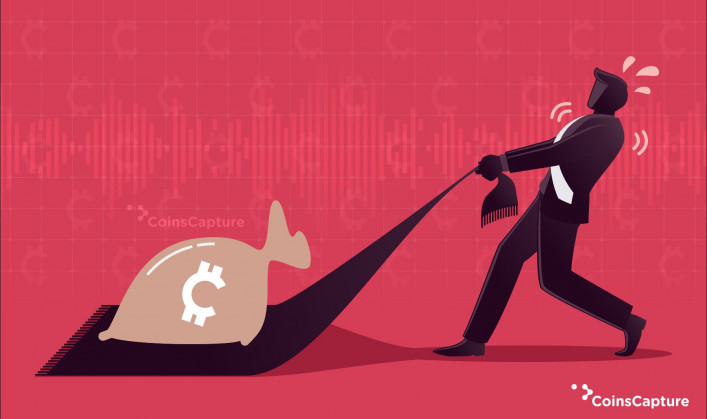7 November 2025
What is Crypto Rug Pull?
Ever since the inception of Crypto in the mainstream, it has grabbed the attention of financial investors and scammers alike. Unfortunately, with every positive aspect of digital assets, there comes a notorious phase that has to date raked in millions of dollars from Crypto enthusiasts. Given the growing popularity, the Crypto world is continuously being plagued by financial scams. One such scam is "Rug Pull".
A rug pull is a malicious endeavour in the Cryptocurrency universe wherein Crypto developers purposely abandon a project and run away with investors' funds. It vividly conveys a feeling where investors were promised a bright future in Cryptocurrency riches. Rug pulls are more common in the decentralized finance (DeFi) ecosystem, especially on decentralized exchanges (DEXs).
Rug pulls thrive on DEXs as these exchanges allow users to list tokens for free and without any auditing, unlike in centralized Cryptocurrency exchanges. In addition, token creation on open-source blockchain protocols like Ethereum is effortless and free of cost. Thus, malicious actors take advantage of these factors and lay their honey traps.
Also read: What Is Cryptocurrency Portfolio Rebalancing And How Does It Work?
As per Coingecko, the market coin of the DeFi space has grown above the $100B mark in 2021, making it a prime area for hackers and scammers to operate. DeFi-related hacks make up more than 60% of the total hack and theft volume in 2021; a significant increase was in 2020 by 25%. Rug pulling has been responsible for over $113 million in losses as of July 2021. However, it is less than the $361 million lost due to outside threat actors, but still a staggering amount of money.
How does a Rug Pull work?
In the Crypto space, rug pull is a situation wherein the developers of a Crypto project pull out support, leaving behind the investors with worthless tokens. It often happens when an entity convinces investors to buy into their Cryptocurrency and then drain out its liquidity, making it impossible for token holders to trade. For example, a "C" token is traded against "ETH". When the malicious individuals remove all the ETH liquidity from the C/ETH pair, traders won't be able to trade their X tokens. The coin's creators create hype around various social media platforms like Telegram, Twitter, etc. and initially invest a substantial amount of liquidity into their pool to gain investor confidence.
Types of Rug Pulls
1. Liquidity Scam: This scam is prevalent in the DeFi Ecosystem. It involves creating a token and listing it on a DEX like Uniswap, Pancakeswap, or Sushiswap. Then, to make worthless tokens tradable, they pair them with a top Cryptocurrency like Ethereum (ETH) into a liquidity pool. DEX allows new investors to exchange their ETH with the new token without any intermediaries.
As time passes, when the investments and the value of worthless tokens soars. The developers then can do a rug pull by pulling out their initial liquidity. With this, they get their initial amount of worthless tokens along with the valuable tokens. However, after they pull out the liquidity, the investors cannot trade their worthless token because the pool is left empty.
Also read: 5 ways crypto investors can make money without Trading
2. Selling Off The Shares: The second way a developer can pull the rug is by selling their token shares. For instance, a developer creates a worthless token. To make it valuable, the developer convinces investors by promising that a new platform is launching soon with a real-world use case. They sell this idea to a majority, and people start seeing it as an opportunity to "get in early." When the price of their tokens skyrockets, they auction all their tokens in the token launch. In simpler words, they lured people to trade a valuable token for a worthless token and then ran away with the accumulated valuable tokens. This method is prolonged so that buyers don't realize they are being rug pulled.
3. Technical manipulation: Another type of rug pull consists of exploiting the "approve" function of ERC20 tokens. This function can be manipulated, which disables the buyers' ability to sell it. For example, when a user swaps a token on DEX, they're allowing (approving) the smart contract to spend the token. A malicious developer can modify this "approve" function; thereby, users can buy tokens but cannot spend them in any way. Initially, users assume that they can sell, convert, or spend in another way like other Cryptocurrency tokens but later realize that this privilege is available to the project developers only due to manipulation in the smart contract algorithm.
Also read: How to Beat the Crypto FOMO?
How to Avoid A Crypto Rug Pull?
If you're keen on a DeFi project, it is necessary to do your own research about the development team and look at the technical aspects that can leave projects open to exploitation. Here's a list of some measures you can follow:
- Legit Documentation: One of the most important red flag for a scam is vague documentation. Always review the white paper and research the project thoroughly to find out more about the owners/token holders.
- Cross-check the developer's holdings: Check what percentage of the token supply is under the developer's control. A large percentage signals that they can very easily manipulate the market. Always remember that having only a few wallet holders indicates centralized control over the project.
- Unrealistic Returns: Many Cryptocurrency projects host ambitious goals which may or may not be achievable. However, if something is too good to be true, it is probably a red flag.
- Unplanned Approach: Crypto projects must have a plan to achieve ambitious goals. If a project is ambiguous about how it will achieve its goals is a potential rug pull.
- Overspending on Marketing: Although highly promoted projects may not necessarily be a scam, it is necessary to do thorough research before investing in projects that are heavily promoted. This is because less credible founders often rely on promotions and advertising to lure investors.
- DEX listing: DEXes are helpful tools, but most legit tokens are also listed on Centralized exchanges. If Cryptocurrency is only listed on DEXes, this can be a warning sign.
Also read: 5 easy steps to lower Bitcoin Transaction Fees
Ending Note:
Rug pulls are pretty common in the DeFi ecosystem because it is not regulated like the stock market. High APYs and 100x returns are common promises used to allure new investors. Unfortunately, these promises are usually made by fake projects wanting to pull the rug and steal the funds. So, when hundreds of dollars are at stake, it is vital to keep the above pointers in mind and thoroughly evaluate a project before investing. In addition, check whether the project has a functioning website and engaging social media pages.
Disclaimer:- The author's thoughts and comments are solely for educational reasons and do not represent financial, investment, or other advice.






